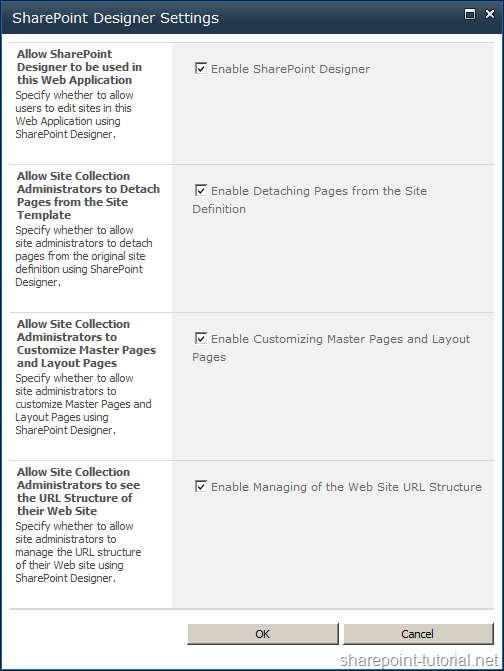

It doesn’t matter what these needs are: collaborative sites, web publishing, business intelligence, workflows or the integration of Line-Of-Business data, SharePoint Designer is the answer. instead of doing a huge specification and implementation phase which consumes a lot of resources we have the possibility to rapidly create solutions for the business needs. Business needs are changing or new ones come up. SharePoint Designer allows you as an advanced user or even as a developer to rapidly create solutions without code. One important complaint with the 2007 version was the quit difficult lock-down of SharePoint Designer 2007 which has changed with SharePoint Designer 2010: You can now easily manage the capabilities at the web application or site collection level. If you intend to use SharePoint Designer 2007 besides the 2010 version you need to install the 32bit version of SharePoint Designer 2010. SharePoint Designer 2010 is available in a 32bit and a 64bit version. Service Pack 2 for SharePoint Designer 2010 (64-bit).

Service Pack 2 for SharePoint Designer 2010 (32-bit).Microsoft SharePoint Designer 2010 (64-bit).Microsoft SharePoint Designer 2010 (32-bit).Update for Microsoft SharePoint Designer 2013 (KB2767858) 64-Bit Edition.Update for Microsoft SharePoint Designer 2013 (KB2767858) 32-Bit Edition.SharePoint Designer 2013 (32-bit and 64-bit).You can still use SharePoint Designer 2013 to connect to SharePoint Server Subscription Edition, 20. Get an email when I change this page.There's no SharePoint Designer 2016. Do yourself a favor and check it out.įollow SP2013Patches on Twitter for immediate updates when this list changes or I add a regression to a patch. To greatly reduce the time it takes to patch a SharePoint 2013 server, read this blog post by Russ Maxwell, Why SharePoint 2013 Cumulative Update takes 5 hours to install? It explains why the process takes so long and provides a handy script that makes the patch install much more quickly. To see which build your products are, go to Central Administration > Upgrade and Migration > Check Product and patch installation status.

To see which build your farm is at with Fiddler, open the site in question and view Inspectors > Headers and under Miscellaneous check the build under MicrosoftSharePointTeamServices header. Or using Windows PowerShell: (get-spfarm).buildversion To see which build your farm is, go to Central Administration > System Settings > Manage servers in your farm (/_admin/FarmServers.aspx) Just like my SharePoint 2010 Build Number post, let me know if there are things I can change, or any content I should add. This blog post will have all the build numbers, their friendly names, how to get them, and what I know about them. Now that the SharePoint 2013 beta is on the streets, it’s time to start keeping track of those glorious build numbers. Please read this blog post to see how to tell the the two SP1s apart


 0 kommentar(er)
0 kommentar(er)
